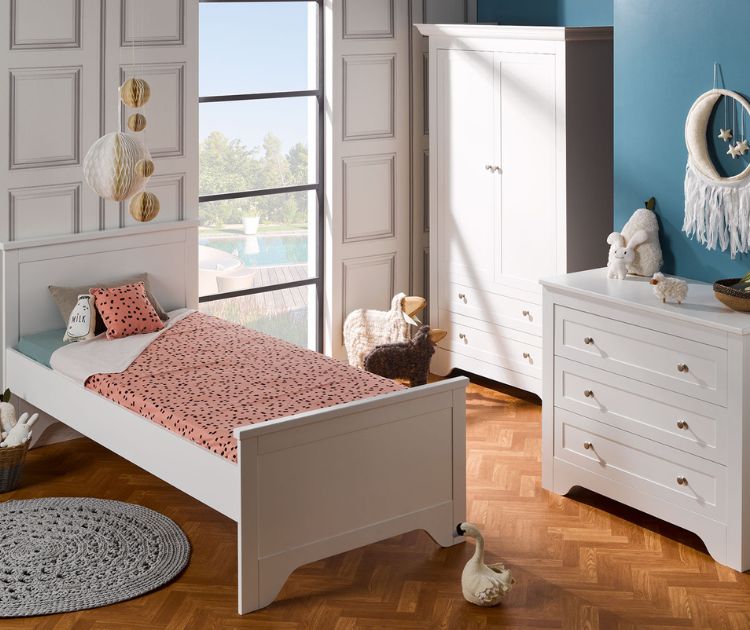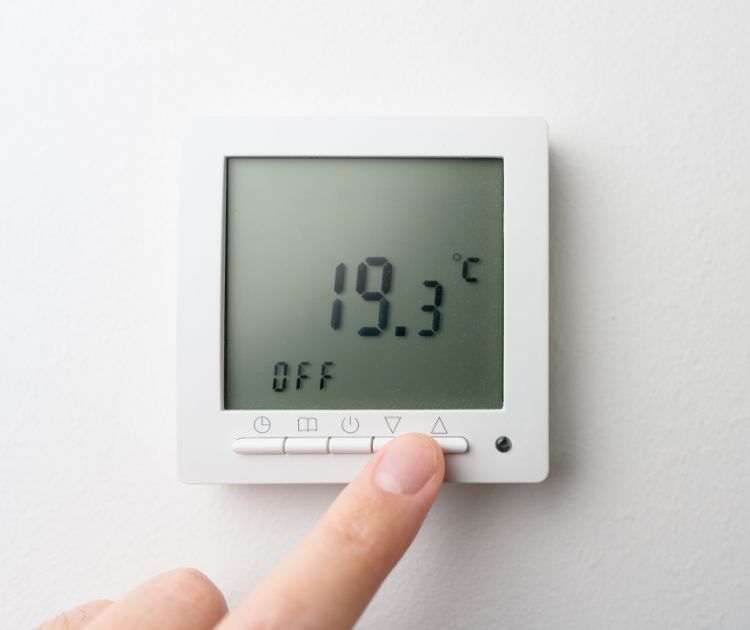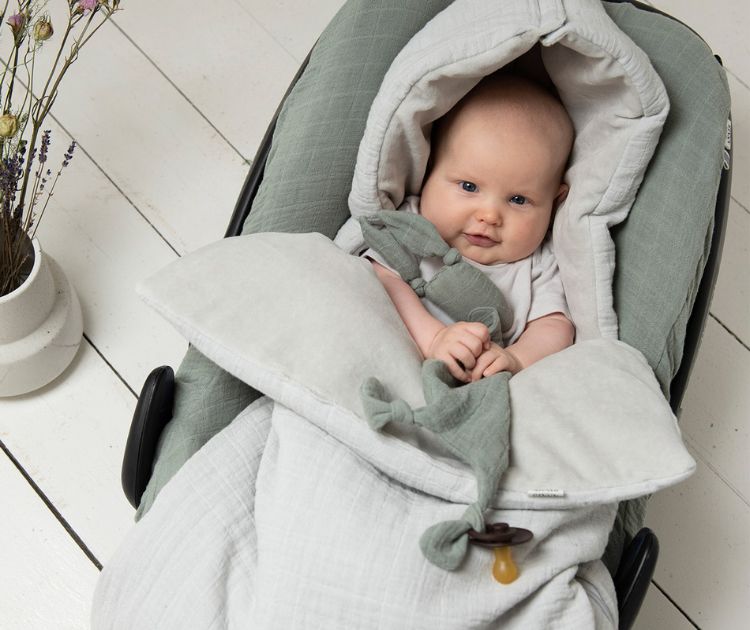What temperature in a child's bedroom for healthy and restorative sleep?

The ideal temperature in a bedroom
Did you know that the temperature of your bedroom can directly influence the quality of your sleep? Finding the right balance between warmth and coolness is essential for promoting quick falling asleep and peaceful nights. Discover in this article practical advice and tips adapted to each season to create an environment conducive to rest, whether for you or your children.
Determining the perfect temperature
Did you know that the temperature of your bedroom directly influences the quality of your sleep ? Yet, few people take the time to adjust this key element. Experts agree that a temperature around 18°C (64.4°F) is ideal for an adult, but this figure can vary depending on personal preferences and local conditions.
Your thermal comfort depends on several factors including:
- the insulation of your house
- the materials used in your bedding
- indoor air humidity.
For example, in regions where winter is harsh. Maintaining an environment that is both warm and cool may seem contradictory, but it's essential. Too hot, and your body struggles to regulate its own temperature; too cold, and you risk disrupting your natural cycles.

Here are suitable solutions depending on the seasons or different types of climate
- For those living in hot climates, an innovative solution is to use reversed ceiling fans redistributing cool air, or to opt for thermal curtains that block outside heat.
- People living in cold areas can benefit from smart thermostats that automatically adjust heat according to nighttime needs.
And what about transitional seasons like spring or fall? This is where hybrid systems shine: these technologies allow precise control of the ideal temperature without wasting energy.
What is the ideal temperature according to the child's age?
The ideal room temperature evolves slightly depending on the child's age. Here's a precise guide to ensure quality sleep from 2 to 10 years old:
2 years old: between 18°C and 19°C (64.4°F to 66.2°F). At this age, the child is still very sensitive to temperature variations. Prefer breathable cotton pajamas and a sleep sack adapted to the season.
3 years old: about 18°C (64.4°F). The body starts to better regulate its temperature, but vigilance is still needed. Avoid overly thick duvets.
4 years old: between 17.5°C and 18.5°C (63.5°F to 65.3°F). A light blanket can gradually replace the sleep sack depending on the child's habits.
5 years old: between 17°C and 18°C (62.6°F to 64.4°F). At this age, thermal comfort becomes more personal. Observe if they uncover themselves or need extra warmth.
6 years old: around 17°C (62.6°F). Thermal regulation is almost stabilized. A light duvet and long pajamas are generally sufficient.
7 years old: between 17°C and 18°C (62.6°F to 64.4°F). You can adjust slightly according to seasons, making sure to maintain good ventilation in the room.
8 years old: about 17°C (62.6°F). The child expresses their feelings better, which helps you adapt the bedding to their needs.
9 years old: between 16.5°C and 17.5°C (61.7°F to 63.5°F). An ambient thermometer allows regular checking if the room stays within the right range.
10 years old: around 17°C (62.6°F). The child sleeps like a pre-teen, in conditions close to those of an adult. Good insulation and daily ventilation remain essential.
Influence of temperature on your sleep
The science behind the link between temperature and sleep phases is fascinating. During the night, the human body naturally lowers its internal temperature to promote rapid falling asleep and optimal recovery. If the ambient environment doesn't follow this natural dynamic, sleep disorders can accumulate.
Studies have shown that sleeping in a room that's too warm significantly reduces the time spent in deep sleep – this crucial phase where our brain "cleans" its toxins and our muscles repair themselves. Consequently, precise temperature adjustment can literally transform your nighttime experience.
Another often overlooked aspect is sleep duration. Researchers have observed a direct correlation between a well-tempered room and an increase of 15 to 30 minutes in total sleep time among adult participants. This is not negligible when we know that every minute counts for our physical and mental well-being.
And if you suffer from chronic insomnia? A study conducted by the University of Amsterdam revealed that slightly lowering body temperature through a cooler environment significantly improves the chances of falling asleep for insomniacs. Impressive, isn't it?
Adjusting temperature according to seasons
Strategies for winter and summer
In winter, a simple trick is to layer several light layers rather than a single thick blanket. This allows the body to better regulate its heat without feeling smothered. If you use electric or centralized heating, make sure not to exceed 20°C (68°F): beyond that, you could alter your natural cycles.
During the summer months, maintaining a cool room becomes a major challenge. Fans are only effective up to a certain point; beyond that, consider portable air conditioners with programmable functions or passive systems like north-facing windows that minimize direct solar gain.
The importance of insulation should not be underestimated either. Poorly insulated walls increase your energy bills while creating uncomfortable thermal gaps. Investing in solutions like insulating panels or reflective films can make all the difference during these extreme periods.
Differences between children and adults

Did you know that a baby's thermal needs differ radically from those of an adult? Their thermal regulation system being immature, they are more sensitive to extreme variations. To ensure their safety and comfort during the night, maintain their room at about 20-22°C (68-71.6°F) – slightly warmer than for yourself.
However, absolutely avoid heavy or multiple blankets which increase the risk of accidental suffocation in young children. Instead, opt for sleep sacks adapted to each season.
As for adults sharing a room with their children? It may be necessary to adjust your personal habits (such as wearing lighter clothing) to ensure optimal family harmony without compromising your own nighttime needs.
Practical tips for maintaining the perfect temperature
Optimal use of electrical appliances
Modern appliances today offer a myriad of options to precisely adjust your indoor environment. Humidifiers are particularly useful in winter when indoor air becomes dry: they not only improve respiratory comfort but also stabilize the overall thermal sensation.
You can also maximize your energy savings thanks to smart programming on your thermostats or fans – sometimes just a few adjusted degrees are enough to observe a noticeable difference on your monthly bill!
Don't forget regular maintenance either: a clogged filter on an air conditioner reduces its efficiency by up to 30%, resulting in more unnecessary energy consumption while compromising your personal comfort...
Adapted bedding and accessories
Finally (and it's often forgotten), choose your bedding carefully! Always opt for natural materials like cotton or linen during summer as they better absorb excess night perspiration... While in winter, prefer insulating merino wool capable of effectively trapping heat without creating an unpleasant heavy sensation...
And why not invest in double-thickness thermal curtains? They will notably protect you against morning light, which is disruptive to your sleep.













 Choosing the right baby blanket dimensions according to season and age
Choosing the right baby blanket dimensions according to season and age
 How to attach a headboard (with or without drilling): quick and effective soluti
How to attach a headboard (with or without drilling): quick and effective soluti
 Waterproof sheet or mattress protector: the best solution by age group
Waterproof sheet or mattress protector: the best solution by age group
 27 Original, Useful, and Trendy Christmas Ideas for Teens 2025
27 Original, Useful, and Trendy Christmas Ideas for Teens 2025
 Christmas Activities for Baby: Creative Ideas for Home & Daycare
Christmas Activities for Baby: Creative Ideas for Home & Daycare